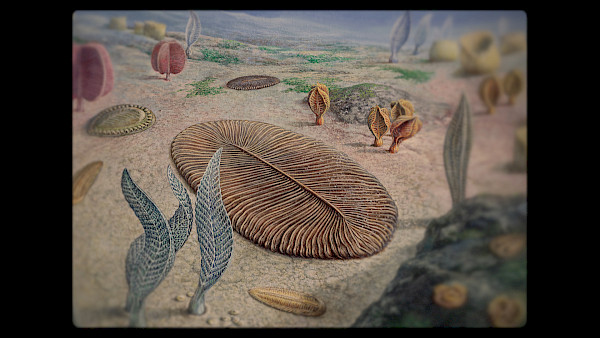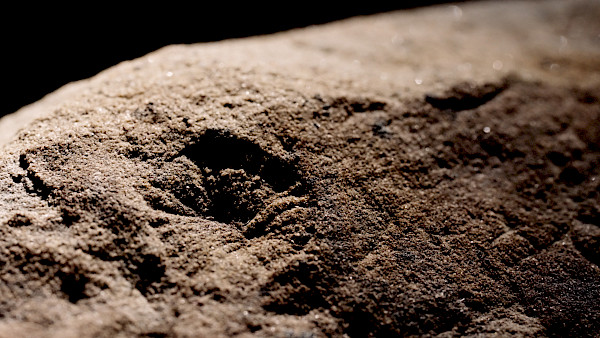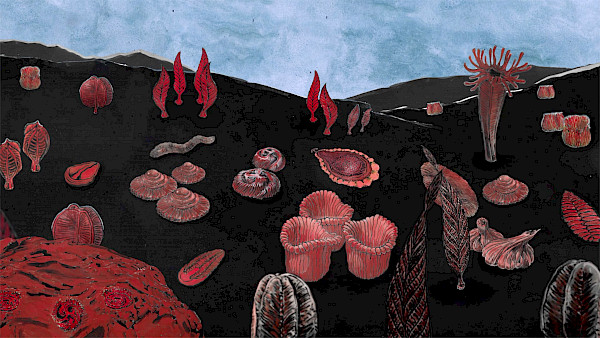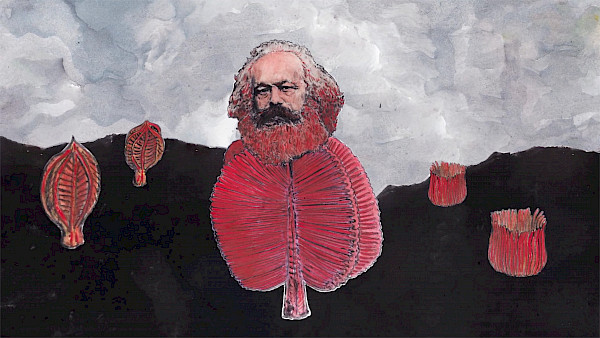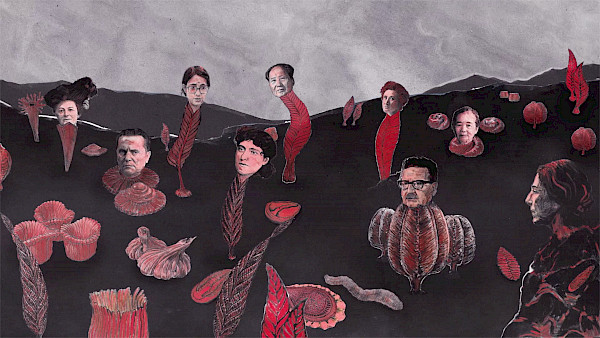94 Million Years of Collectivism, Video Study
2022
13:14 min.
94 Million Years of Collectivism, Video Study centres on the geological period known as the Ediacaran. The Ediacaran spans 94 million years (from 635 million years to 541 million years ago), and precedes the Cambrian period, which for a long time was credited to be the era that birthed complex lifeforms. It was only in the mid-twentieth century that Ediacaran fossils were discovered and identified as possibly belonging to a geological time frame of its own, a fact that was finally recognized in 2004.
While the Cambrian period is characterised by an explosive diversification of species with predation being the primary modus operandi, the Ediacaran constituted an interdependent non-predatory ecology. The soft-bodied underwater organisms of the Ediacaran, which were neither plants nor animals, took the form of oval-shaped Dickinsonia which engaged in slow movement, or the plant-shaped Charnia which were “rooted” in the seafloor. These life forms probably existed through photosymbiosis, chemosymbiosis, and osmotrophy, recirculating nutrients amongst one another. In other words, the ninety-four million years of the Ediacaran period bypassed predation in its entirety, elaborating a shared ecology instead.
The current conditions of global capitalism are often naturalised through Neo-Darwinian narratives that uphold extractivist predation as the primal evolutionary drive. But the Ediacaran faces us with a fundamentally different collectivist ecology. Is it possible that in imagining more egalitarian forms of life, we simultaneously dream the Ediacaran?
-
WRITTEN AND DIRECTED BY
Jonas Staal
-
COUNSELLED AND NARRATED BY
Proletgeologist Vincent W.J. van Gerven Oei
-
EDIT BY
Ruben Hamelink
-
PROLETGEOLOGY PALEOART BY
Jonas Staal
-
ANIMATION BY
Tom Estrera III
-
GRAPHIC DESIGN BY
Rana Karan
-
COMMISSIONED BY
Adwait Singh / Mardin Biennale, 2022






